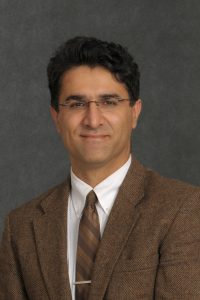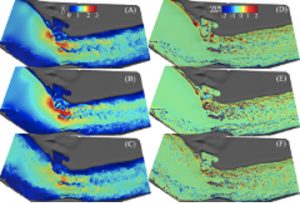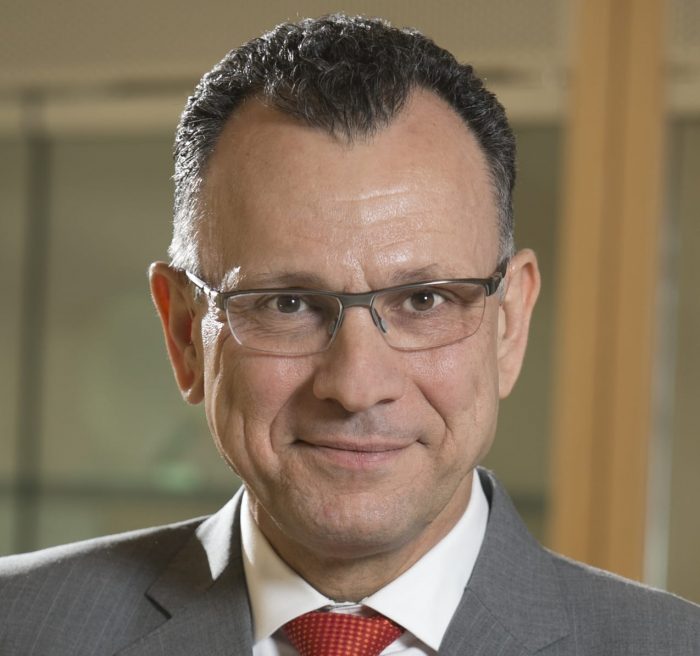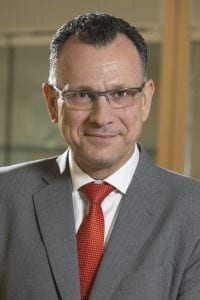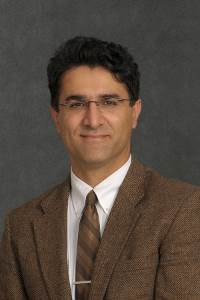By Daniel Dunaief
An approaching weather front brings heavy rains and a storm surge, threatening to inundate homes and businesses with dangerous water and potentially undermining critical infrastructure like bridges.
Once officials figure out the amount of water that will affect an area, they can either send out inspectors to survey the exact damage or they can use models that take time to process and analyze the likely damage.
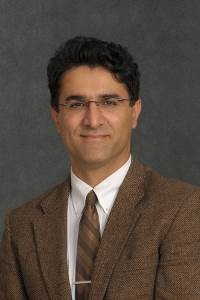
Ali Khosronejad, Associate Professor in the Department of Civil Engineering at Stony Brook University, hopes to use artificial intelligence to change that.
Khosronejad recently received $550,000 from the National Science Foundation (NSF) for four years to create a high-fidelity model using artificial intelligence that will predict the flood impact on infrastructure.
The funds, which will be available starting on June 20, will support two PhD students who will work to provide an artificial intelligence-based program that can work on a single laptop at a “fraction of the cost of more advanced modeling approaches,” Khosronejad said during an interview in Madrid, Spain, where he is on sabbatical leave under a Fulbright U.S Senior Scholar Award. He is doing his Fulbright research at Universidad Carlos III de Madrid.
Stony Brook University will also provide some funding for these students, which will help defray the cost of expenses related to traveling and attending conferences and publishing papers.
In the past, Stony Brook has been “quite generous when it comes to supporting graduate students working on federally funded projects,” Khosronejad explained and he hopes that continues with this research.
Khosronejad and his students will work with about 50 different flooding and terrain scenarios, which will cover about 95 percent of extreme flooding. These 50 possibilities will cover a range of waterways, infrastructure, topography, and coastal areas. The researchers will feed data into their high fidelity supercomputing cluster simulations to train artificial intelligence to assess the likely damage from a flood.
As they build the model, Khosronejad explained that they will collect data from floods, feed them into the computer and test how well the computer predicts the kind of flooding that has can cause damage or threaten the stability of structures like bridges. Over the next four years, the team will collect data from the Departments of Transportation in California, Minnesota and New York.
Nearly six years ago, his team attempted to use algorithms available in ChatGPT for some of his AI development. Those algorithms, however, didn’t predict flood flow prediction. He tried to develop new algorithms based on convolutional neural networks. Working with CNN, he attempted to improve its capabilities by including some physics-based constraints.
“We are very enthusiastic about this,” Khosronejad said. “We do think that this opportunity can help us to open up the use of AI for other applications in fluid mechanics” in fields such as renewable energy, contaminant transport predictions in urban areas and biological flow predictions, among others.
Planners working with groups such as the California Department of Transportation could use such a program to emphasize which infrastructure might be endangered.
This analysis could highlight effective mitigation strategies. Artificial intelligence can “provide [planners and strategists] with a tool that is not that expensive, can run on a single laptop, can reproduce lots of scenarios with flooding, to figure out which infrastructure is really in danger,” Khosronejad said.
Specifically, this tool could evaluate the impact of extreme floods on bridge foundations. Floods can remove soil from around the foundation of a bridge, which can cause it to collapse. Civil engineers can strengthen bridge foundations and mitigate the effect of future floods by using riprap, which is a layer of large stones.
This kind of program can reduce the reliance on surveying after a flood, which is expensive and sometimes “logistically impossible and unsafe” to monitor areas like the foundations of bridges, Khosronejad said. He plans to build into the AI program an awareness of the changing climate, so that predictions using it in three or five years can provide an accurate reflection of future conditions.
“Floods are getting more and more extreme” he said. “We realize that floods we feed into the program during training will be different” from the ones that will cause damage in subsequent years.
Floods that had a return period of every 100 years are now happening much more frequently. In one or two decades, such a flood might occur every 10 years.
Adding updated data can allow practitioners to make adjustments to the AI program a decade down the road, he suggested. He and his team will add data every year, which will create a more versatile model.
What it can’t do
While the AI programs will predict the damage to infrastructure from floods, they will not address storm or flood predictions.
“Those are different models, based on the movement of clouds” and other variables, Khosronejad said. “This doesn’t do that: if you give the program a range of flood magnitudes, it will tell you what will happen.”
High fidelity models currently exist that can do what Khosronejad is proposing, although those models require hundreds of CPUs to run for five months. Khosronejad has developed his own in house high fidelity model that is capable of making similar predictions. He has tested it to examine various infrastructures and used it to study various flooding events. These models are expensive, which is why he’s trying to replace them with AI to reduce the cost while maintaining fidelity.
AI, on the other hand, can run on a single CPU and may be able to provide the same result, which will allow people to plan ahead before it happens. The NSF approved the single principal investigator concept two months ago.
Khosronejad has worked with Fotis Sotiropoulos, former Dean of the College of Engineering and Applied Sciences at Stony Brook and current Provost at Virginia Commonwealth University, on this and other projects.
The two have bi-weekly discussions over the weekend to discuss various projects.
Sotiropoulos was “very happy” when Khosronejad told him he received the funds. Although he’s not a part of the project, Sotiropoulos will “provide inputs.”
Sotiropoulos has “deep insights” into fluid mechanics. “When you have him on your side, it always pays off,” Khosronejad said.



